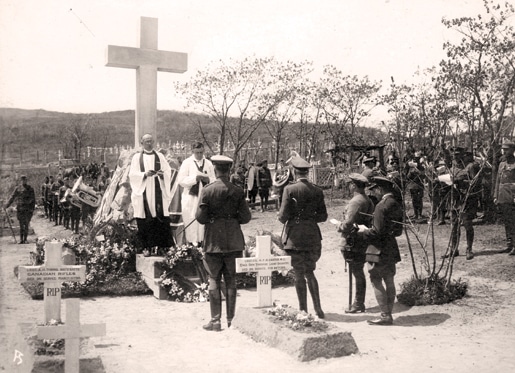There was a little-known role played by Canada in Russia 105 years ago that has become less than a footnote in Canadian history. Towards the end of 1918, the First World War was coming to a brutal and bloody end. In March, the new Bolshevik regime in Russia had taken their country out of the war against Germany and Austria-Hungary, and a civil war began between the Red Russians (Bolsheviks) and the White Russians, supporters of the Czar. The Allied governments supported the Whites in order to bring Russia back into the war, although this support did not extend to King George V allowing his cousin, Czar Nicholas, and his family safe sanctuary in Britain.

Canadian Prime Minister, Robert Borden, pledged to send a contingent of Canadian troops to support the Whites and an Order in Council was passed in August, 1918 to that effect. It is believed that his motives were less to aid the Whites than to increase Canada’s role within the British Empire with a view to having a larger role in the post-war world. However, an attempt to raise a volunteer force was unsuccessful, and it was not until October that a contingent composed of conscripts and other soldiers was gathered and sent to Victoria, on route to Siberia. The Canadian Expeditionary Force (Siberia) (CEFS) consisted of 4,209 men, and one woman, a Red Cross nurse, of whom fully one-third were conscripts.
The soldiers involved were not happy to be traversing Canada from one war zone to another, particularly after the Armistice of November, 1918 ended the war in Europe. To make matters worse, their train carried the Spanish Influenza pandemic across Canada, as well as affecting many of the soldiers on board. Morale was low and the conscripts believed their continued use after the Armistice was illegal. Nor were they alone in this belief. Labour unions, newspapers, the United Farmers of Ontario, and, most significantly, members of Borden’s own Cabinet. The Acting Prime Minister, as Borden headed for the peace talks in France, wrote to him with a warning:
“All our colleagues are of opinion that public opinion here will not sustain us in continuing to send troops, many of whom are draftees under the Military Service Act and Order in Council, now that the war is ended. We are all of opinion that no further troops should be sent and that Canadian forces in Siberia should, as soon as situation will permit, be returned to Canada. Consider matter of serious importance.”
Borden refused to cancel the operation and the troops were scheduled to embark on December 21. But, as they marched through Victoria on their way to the ship, many of the conscripts refused to go any further. Officers fired shots in the air and ordered the obedient troops to use their belts to whip the mutineers into line. They were them marched to the ship, “escorted” by soldiers with fixed bayonets. During the five-week voyage to Siberia, these men were in chains, and not allowed showers or a change of clothes. Charges against the men were dropped because of concerns that their continued enlistment after the Armistice was illegal under the terms of the Military Service Act for a mission tangentially connected to the “defence of the realm”.
By the time they reached Vladivostok, attitudes had changed in the Government of Canada, and Borden sent word that the CEFS were not to undertake active service. Instead, most of the men remained in Vladivostok with little to do but visit the town’s sights and organise sports and other entertainment suitable to soldiers far from home.
Others did venture nearer to the war zone, and experienced attacks by Red detachments. But, by May, 1919, it was recognised that the entire expedition had been a dismal failure and the CEFS was returned to Canada by the end of June. But they left behind either fourteen or nineteen men (the exact number seems unclear) who had died in Siberia or on the outward voyage. Five Canadians deserted while in Russia, and another four died on the voyage home. The Canadian command dedicated fourteen wooden crosses and a stone monument at Vladivostok’s Marine Cemetery on Monastirskaia Hill, along with soldiers from British, French, Czechoslovak and Japanese detachments which had also been sent to Siberia.
During the Soviet period, this site was largely unmaintained. In 1996, a Canadian squadron of warships visited Vladivostok; during the visit, sailors from HMCS Protecteur, assisted by members of the Russian Navy, replaced headstones and generally repaired the graves of Canadians buried in a local cemetery. The entire enterprise was quietly forgotten in Canada, overshadowed by the Winnipeg General Strike of May and June, 1919, during which police fired on and killed Canadian workers. That is another story.

